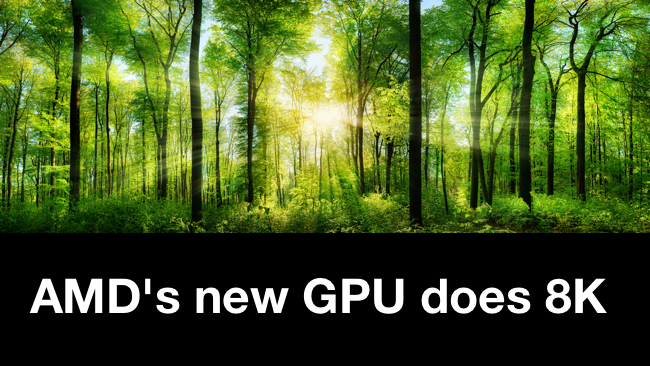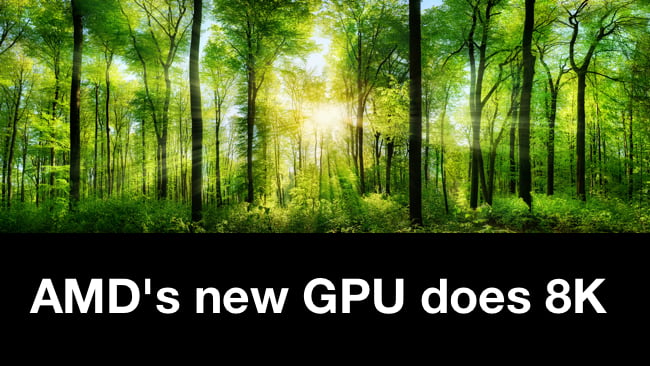
 AMD Radeon with forest background
AMD Radeon with forest background
Once upon a time Siggraph was all about new CGI software. This year at least it seems to have been dominated by graphics cards, and AMD Radeon’s Solid State Graphics tech promises the most extreme performance jump yet.
It’s not available on the market just yet — applications for developer kits are being processed now and cost $9,999 — but AMD Radeon’s new Solid State Graphics technology (SSG) promises to bring about exactly the sort of performance increase we need if we’re going to be dealing effectively with the new generation of 4K VR, never mind the 8K future.
And it was the 8K demo that really grabbed the attention at the show, the company saying that it boosted raw video timeline scrubbing from 17 frames per second to a fairly stunning 90+ frames per second.
“As content creators rapidly adopt 8K resolution to future-proof their content, a 5x performance boost will improve quality of life, productivity and efficiency in the editing process,” the company notes with some understatement.
We’ve done some back of the envelope calculations and reckon that works out at roughly 50x the data rate of HD at 30fps.
Essentially what the company has done is load more memory onto the graphics card — and by more we mean an order of magnitude more, which is quite jaw-dropping. Here’s how they explain it: “When needed information is not available in GPU memory, typical memory architecture requires the GPU to send a request to the CPU. The CPU then retrieves the needed content from CPU memory, or if not there then from a hard drive. This entails considerable overhead that limits GPU performance.
“With this new GPU technology, a one terabyte extended frame buffer is dedicated to support the GPU. This enables much larger datasets to be loaded locally, connected over a dedicated PCIe bus. When the GPU requests content, it looks first in the local frame buffer and only needs to involve the CPU if the data is not already in the extended frame buffer.”
Full availability is not slated until sometime in 2017, but one of the interesting details that we noted from its accompanying statements was the phrase “Starting at a full terabyte of Radeon Solid State Graphics…”
The operative word there is ‘starting’. Things might be about to accelerate again and fast.
Forest image by Shutterstock
.
Tags: Technology


Comments